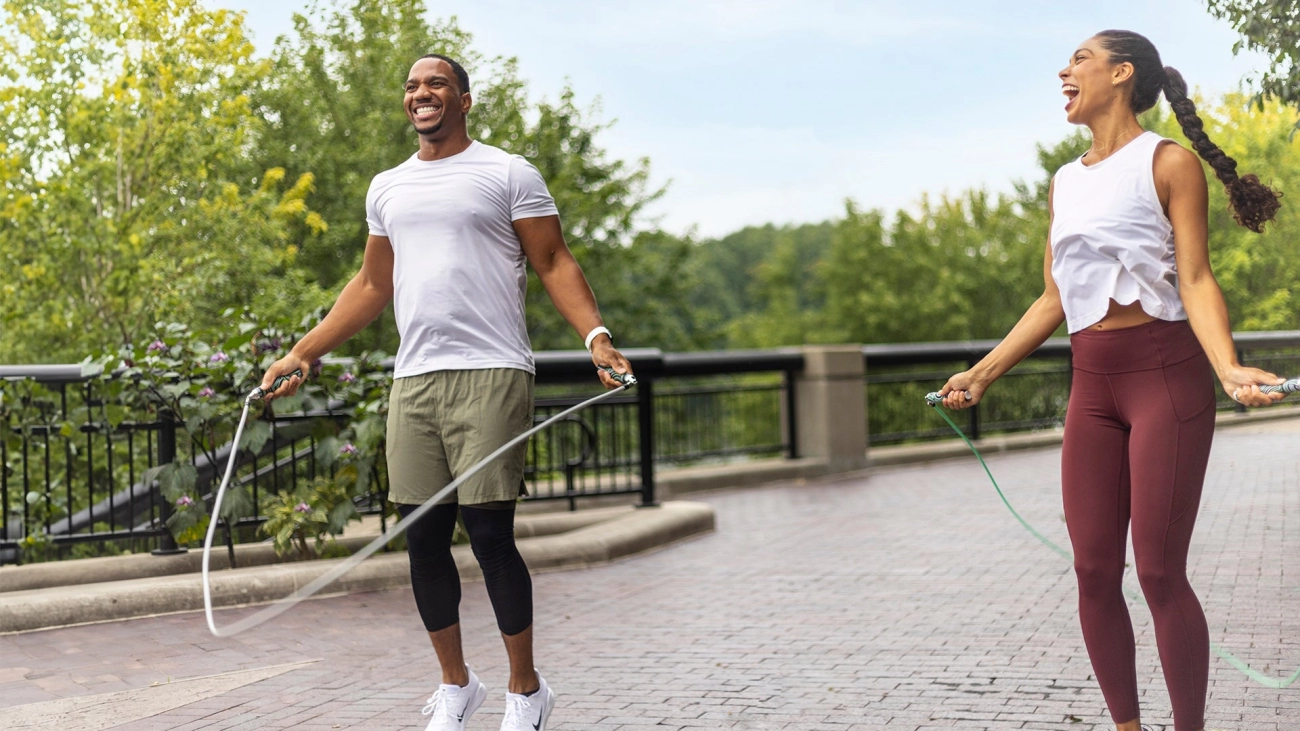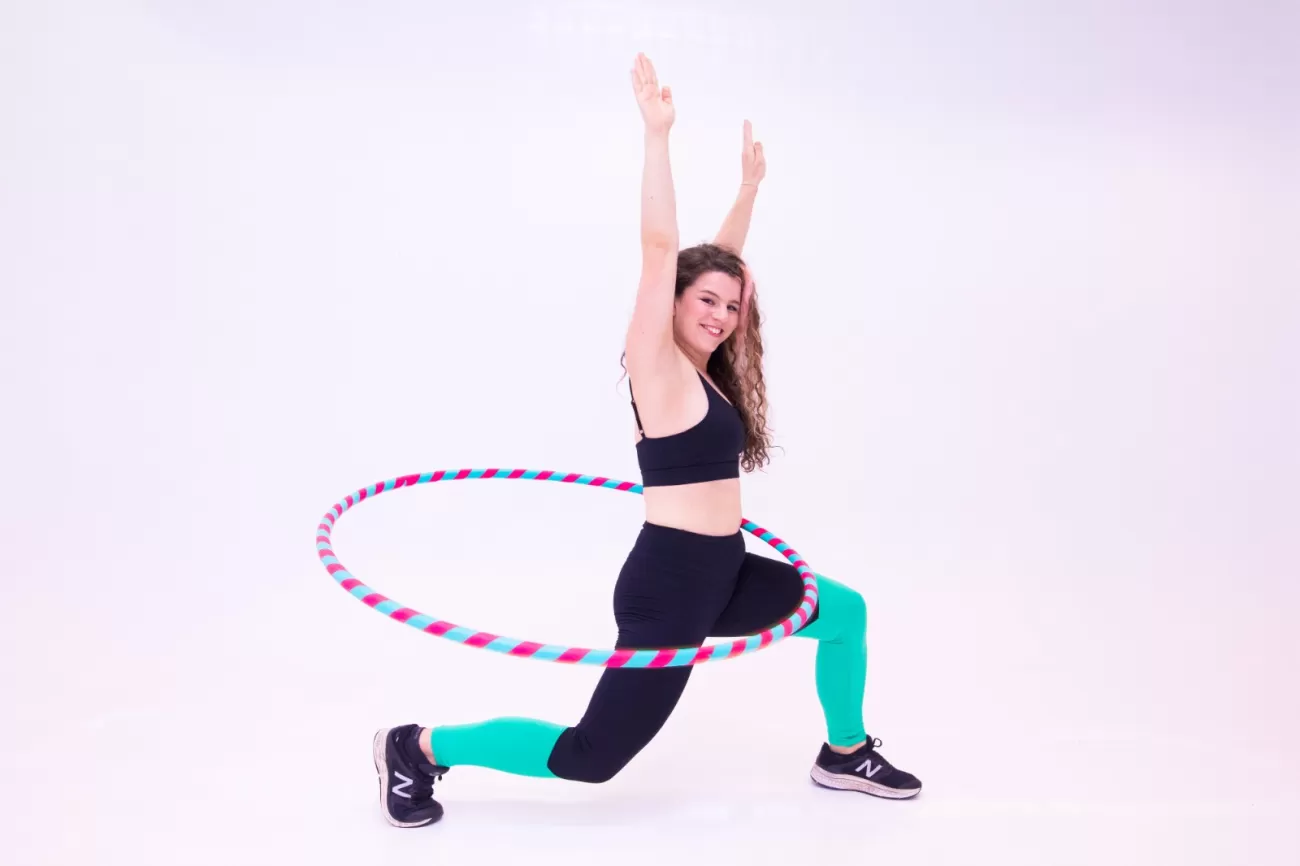If you’re new to fitness or just looking for a fun way to boost your cardio, a rope skipping routine for beginners might be exactly what you need. It’s simple, effective, and doesn’t require a gym membership or fancy equipment. In fact, with just the right skipping rope and a bit of guidance, you can burn calories, improve coordination, and build endurance—all from the comfort of your home or even outdoors.
In this post, you’ll discover an easy-to-follow beginner jump rope routine, tips to avoid common mistakes, and how to pick the best gear to get started right. Whether you want to shed some pounds, increase stamina, or simply find a new favorite workout, this guide is designed to make rope skipping accessible and enjoyable. Ready to jump in? Let’s get started!
Why Rope Skipping is Ideal for Beginners Jump Rope Workout for Beginners
Starting a new fitness routine can feel overwhelming, but rope skipping is one of the easiest and most effective workouts for beginners. Here’s why it stands out:
Low Barrier to Entry Affordable and Easy to Learn
- Minimal cost: A good beginner jump rope won’t break the bank, making this workout accessible to just about anyone.
- Simple skills: You don’t need fancy moves or complicated techniques to get started. Basic jumps are easy to learn and build confidence quickly.
- Quick setup: No need for a gym or special equipment—just a rope and some open space.
Portable and Space Efficient Workout Anywhere
- Compact gear fits in a gym bag or backpack.
- Perfect for home workouts, parks, or travel.
- Requires only a small, flat area, so you don’t need a large space.
Quick Results and Steady Progress with Practice
- You’ll notice improvements in coordination, stamina, and speed fast, even with just a few sessions a week.
- Set clear goals, like increasing jump duration or reps, and you’ll see measurable gains.
- Builds a solid foundation for other fitness activities.
Boosts Cardiovascular Health and Overall Fitness
- Jump rope is an excellent beginner cardio workout that raises your heart rate efficiently.
- Helps improve endurance, balance, and full-body strength over time.
- Supports weight loss and calorie burn without overwhelming intensity.
In short, rope skipping offers a straightforward, affordable way to jumpstart your fitness journey. Its low barrier to entry, portability, and fast results make it perfect for beginners aiming for better health and overall fitness.
Essential Equipment for Beginners Rope Skipping

Getting the right gear from the start can make your rope skipping routine for beginners smoother and more enjoyable. Here’s what you need to pay attention to when choosing your equipment.
Choosing the Right Skipping Rope Length Weight and Grip
- Length: Your rope should be the right length for your height. A simple way to check is to step in the middle of the rope and pull the handles up — they should reach about chest level. Too long or too short ropes make skipping tricky and can slow your progress.
- Weight: Beginners often do better with lightweight ropes because they’re easier to control and less tiring. But some prefer slightly weighted ropes to build wrist strength faster. JumpRopeWholesale offers a great range of both lightweight and weighted options tailored to beginners.
- Handle Grip: Look for handles with a comfortable, non-slip grip. This helps prevent your hands from slipping when you start to sweat. JumpRopeWholesale designs handles with soft, ergonomic grips that suit long sessions.
Why JumpRopeWholesale Ropes Are Ideal for Beginners
At JumpRopeWholesale, the focus is on quality, durability, and comfort. Their ropes are made with materials that last and handle everyday use without snapping or tangling. Here’s why they stand out:
- Durable construction for regular use
- Comfortable handles to avoid blisters and hand fatigue
- Variety in rope types like PVC jump ropes and beaded ropes, helping you find what fits your style
- Affordable prices perfect for beginners who want something reliable without breaking the bank
Optional Accessories to Enhance Your Routine
Besides a good rope, some extras can boost your comfort and safety:
- Comfortable Shoes: Invest in sneakers with good arch support and cushioning. This protects your feet and joints during high-impact jumps.
- Wrist Guards: If you’re worried about wrist strain, light wrist guards can offer extra support during longer sessions.
Having the right equipment from JumpRopeWholesale and proper accessories sets a strong foundation for your beginner jump rope workout. It minimizes injury risk and keeps you focused on making fast, steady progress.
Warm-Up and Safety Tips Before Starting Your Rope Skipping Routine for Beginners
Warming up is essential before any jump rope workout for beginners because it prepares your muscles and joints for the activity, reducing the risk of injury and improving overall performance. Skipping rope is a high-impact exercise that involves your lower legs, knees, hips, and shoulders, so warming up these areas can make your workout safer and more effective.
Importance of Warming Up Muscles and Joints
Before you start your beginner jump rope routine, take 5 minutes to get your body ready. Warming up:
- Increases blood flow to muscles, enhancing flexibility
- Loosens joints to prevent strains or sprains
- Improves coordination, which is key for timing your jumps and rope swings
- Helps raise your heart rate gradually, reducing shock to your cardiovascular system
Skipping a warm-up can lead to muscle tightness, poor form, and even injury—especially if you’re new to rope skipping.
Simple 5 Minute Warm Up Exercises for Beginners
You don’t need complicated moves to warm up effectively. Try this easy routine to get ready for your skipping rope workout:
- Joint rotations: Circle your ankles, knees, wrists, and shoulders 10 times clockwise and counterclockwise.
- Light cardio: March or jog in place for 1-2 minutes to activate your cardiovascular system.
- Dynamic stretches:
- Arm swings forward and backward (20 reps)
- Hip circles (10 each direction)
- Calf raises on toes (15 reps)
- Leg swings: Front-to-back and side-to-side for 10 swings per leg to loosen hips and legs
This quick warm-up activates your body and gets you mentally prepared for your skipping rope exercises for beginners.
Safety Precautions to Avoid Injuries
To enjoy jump rope for weight loss and fitness without setbacks, keep these safety tips in mind:
- Choose a proper surface: Use a flat, shock-absorbing surface like a wooden floor or exercise mat. Avoid concrete or asphalt to reduce impact on your knees and joints.
- Maintain correct posture: Keep your head up, shoulders relaxed, back straight, and core engaged. Land softly on the balls of your feet to minimize shock.
- Wear proper footwear: Supportive shoes with good cushioning help protect your feet and joints during jumping.
- Start slow: Don’t push too hard at first. Gradually build up duration and intensity to avoid overtraining injuries.
Following these warm-up and safety guidelines will help you build a strong foundation for your beginner rope skipping routine while keeping injuries at bay.
For more detailed beginner skipping rope workouts and tips, check out our beginner skipping rope workout guide.
Beginner Friendly Rope Skipping Routine for Beginners

Starting a jump rope workout for beginners is all about building a solid foundation with simple moves and manageable intervals. Here’s a step-by-step rope skipping routine to get you comfortable, improve your coordination, and boost your endurance.
Start with Basic Jumps
- Begin with feet together, performing low, controlled jumps.
- Keep the rope turns smooth and steady.
- Focus on landing softly on the balls of your feet to avoid strain.
Duration and Reps
- Jump for 30 seconds, then rest for 30 seconds.
- Repeat this cycle 5 times for your first set.
- This interval approach helps your body adjust gradually and prevents overexertion.
Introduce Alternate Foot Step Jump
- Once you feel comfortable with basic jumps, add the alternate foot step jump.
- This move mimics running in place by switching feet with each jump.
- It increases agility and simulates a beginner cardio workout.
Add Basic High Knees Jump
- Incorporate high knees jumps as you build stamina.
- Raise your knees to waist level, maintaining a steady rope rhythm.
- This variation improves cardiovascular fitness and leg strength.
Gradually Increase Duration
- As your endurance improves, slowly add more jump time—aim for 45 seconds to 1 minute per set.
- Reduce rest intervals to 15-20 seconds to boost stamina further.
- Listen to your body but challenge yourself consistently.
Sample Weekly Routine Schedule
- Practice rope skipping 3 to 4 times per week.
- Each session should last about 15 to 20 minutes including warm-up and cool-down.
- Consistency is key to seeing quick results and improvements in your jump rope routine.
This Beginner Friendly Rope Skipping Routine creates a balanced approach for those new to skipping rope and looking for an easy skipping rope exercise plan. For more detailed rope options, check out the 7 Foot Skipping Rope made specifically for beginners.
Common Mistakes Beginners Should Avoid in Rope Skipping Routine
Starting a jump rope workout for beginners can be exciting, but it’s easy to fall into habits that slow progress or cause injury. Here are some of the most common mistakes and how to avoid them to ensure a smooth, effective skipping rope routine.
Jumping Too High or Too Hard
Many beginners think they need to jump as high as possible, but jumping too high wastes energy and increases the risk of joint strain. The goal is to clear the rope with a low, controlled bounce. This helps maintain a steady rhythm and makes your workout more efficient.
- Keep jumps low (1 to 2 inches off the ground)
- Land softly to minimize impact on your knees and ankles
- Focus on smooth, quick movements instead of big jumps
Incorrect Rope Length or Grip
Using the wrong rope length or holding the handles incorrectly can make skipping frustrating or cause poor form. A rope that’s too long or too short disrupts timing, while a bad grip leads to hand fatigue and less control.
- Check rope length: When stepping on the middle, handles should reach near your armpits
- Hold handles comfortably but firmly, avoiding a tight squeeze
- Select a rope with proper weight and grip designed for beginners, like those offered by JumpRopeWholesale
Poor Posture and Form
Skipping with bad posture wastes energy and increases injury risk. Beginners often hunch over or lean forward too much, which can strain the neck, shoulders, and back.
- Stand tall with a slight bend in the knees
- Keep your head up and eyes forward
- Engage your core for balance and stability
- Use wrists, not arms, to turn the rope smoothly
Overtraining and Neglecting Rest
It’s tempting to jump into a daily routine, but skipping rope is intense cardio and needs recovery. Overtraining leads to fatigue, poor performance, and injury like shin splints or joint pain.
- Start with 3 to 4 sessions per week to build endurance gradually
- Allow at least one rest day between skipping workouts
- Listen to your body – if you feel persistent soreness or fatigue, slow down or take extra rest
By avoiding these mistakes, you’ll get the most out of your beginner jump rope routine with steady progress, fewer injuries, and an enjoyable experience every time you skip.
Tips to Improve Endurance and Technique for Beginners
Improving your rope skipping routine for beginners means focusing not just on how long you jump but also how well you jump. Building endurance and refining your technique go hand in hand to make your jump rope workout for beginners effective and enjoyable. Here’s how to do it right:
Incorporate Interval Training
- Alternate between jumping and resting: Start with intervals like 30 seconds jumping followed by 30 seconds rest. This helps build stamina without overwhelming your body.
- Gradually increase the jumping time and reduce rest periods as your endurance grows.
- Interval training boosts cardiovascular health, making rope skipping a solid beginner cardio workout.
Gradually Increase Jump Duration and Decrease Resting Time
- Aim to slowly extend your jumping intervals by 5 to 10 seconds each week.
- Cut down your resting time in small steps to challenge your stamina but avoid burnout.
- This steady progression prevents injury and promotes consistent improvement.
Focus on Rhythm and Timing of the Rope
- One of the biggest challenges is syncing your jumps with the rope’s swing.
- Pay attention to maintaining a smooth rhythm, which improves efficiency and reduces fatigue.
- Use a metronome app or count out loud to help keep a steady pace during your skipping rope exercises for beginners.
Practice Consistent Breathing Techniques
- Don’t hold your breath—try to maintain a steady, natural breathing pattern.
- Inhale through your nose and exhale through your mouth in a rhythmic pattern aligned with your jumps.
- Proper breathing helps increase oxygen flow to your muscles, keeping you energized longer.
By keeping these tips in mind, your beginner jump rope routine will become more effective, helping you build endurance and master your technique. Stick with it, and you’ll see quick results in your overall fitness and coordination.
Tracking Progress and Staying Motivated in Your Rope Skipping Routine for Beginners
Tracking your progress is one of the best ways to stay motivated and see real improvements in your beginner jump rope routine. Whether you want to lose weight, improve endurance, or just enjoy a beginner cardio workout, keeping an eye on your performance helps you stay focused and consistent.
How to Track Your Jumps and Improvements
- Use jump rope apps: Many free and paid apps are designed specifically for jump rope workouts. They count your jumps, track your workout duration, and sometimes even offer guided routines that fit beginners.
- Journals or workout logs: A simple notebook or digital document works well. Record the number of jumps, workout duration, and how you felt during the session. Over time, this will show your steady gains in stamina and skill.
- Set clear, measurable goals: For example, aim to increase your jumping time from 30 seconds to 1 minute without rest, or to hit a total of 500 jumps per session.
Setting Achievable Goals
Start with small goals that match your current skill level to avoid frustration:
- Increase jump duration gradually: Add 10-second increments to your jumping time each week.
- Try new jump styles slowly: Once basic jumps feel easy, add alternate foot steps or high knees.
- Focus on consistency: Aim for 3 to 4 sessions per week before pushing harder.
Breaking your progress into these bite-sized goals makes it easier to stay on track and see success.
Keeping Your Routine Enjoyable and Fresh
Sticking with your new jump rope habit is easier when you mix things up:
- Combine different jump styles: Switch between basic jumps, alternate foot steps, and double-unders to keep workouts interesting.
- Add upbeat music or podcasts: This makes your sessions feel less like exercise and more like fun time.
- Celebrate milestones: Reward yourself when you hit goals, like buying a new pair of comfortable shoes or accessories.
For more tips on keeping your jump rope routine engaging and effective, check out our guide on a good skipping rope routine.
By tracking your progress carefully, setting achievable goals, and keeping your workouts varied, you’ll stay motivated and make the most out of your easy skipping rope exercises as a beginner.
Why Choose JumpRopeWholesale for Your Rope Skipping Needs
When starting a rope skipping routine for beginners, having the right equipment makes all the difference. JumpRopeWholesale stands out as a top choice for jump rope workout beginners across the United States because they offer a wide range of quality products designed to meet different skill levels and needs.
Ropes Tailored for Beginners
JumpRopeWholesale provides beginner-friendly skipping ropes that focus on comfort, durability, and ease of use. Whether you’re looking for PVC jump ropes or beaded jump ropes, their collection covers options that are:
- Right length and weight for smooth, controlled skipping.
- Comfortable handles designed to reduce hand fatigue.
- Durable materials that withstand frequent use.
This attention to detail ensures beginners can quickly pick up easy skipping rope exercises with gear that feels right and pushes toward consistent improvements.
Commitment to Quality and Customer Satisfaction
JumpRopeWholesale takes pride in quality assurance. Each rope is tested for durability and comfort, reassuring buyers they’re investing in gear built to last. Positive customer testimonials highlight smooth jump rope workout experiences, lasting rope life, and noticeable progress from consistent use.
Competitive Pricing and Bulk Offers
Getting started with rope skipping doesn’t have to break the bank. JumpRopeWholesale offers competitive pricing suited for individuals, fitness groups, and gyms alike. They also provide bulk purchasing options and special deals—a great benefit if you’re outfitting a class, gym, or community fitness group.
Choosing JumpRopeWholesale means you get a skipping rope that fits your beginner cardio workout goals, matched with reliable service and pricing made for the U.S. market. This makes your jump rope journey smoother and geared for success right from the start.



